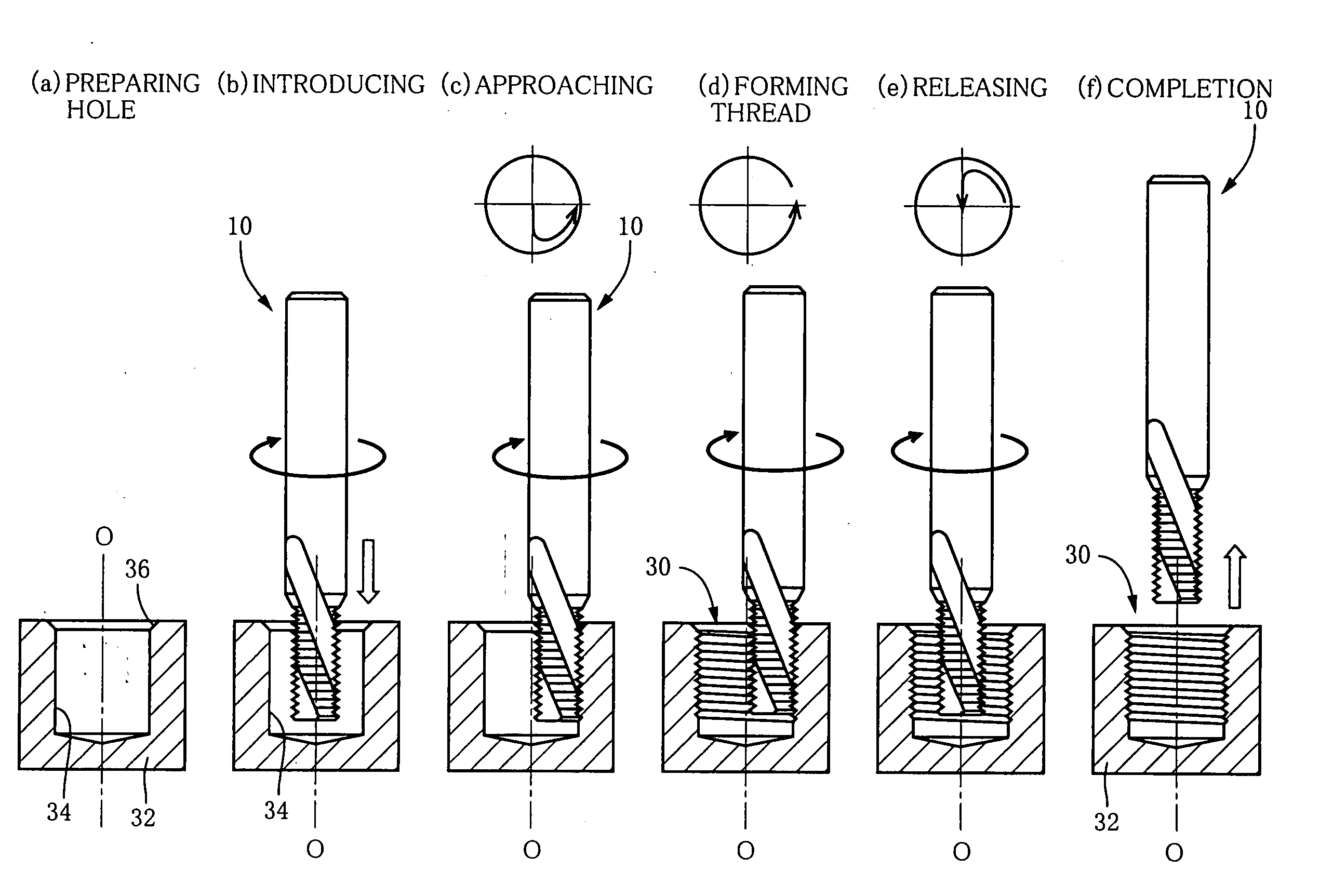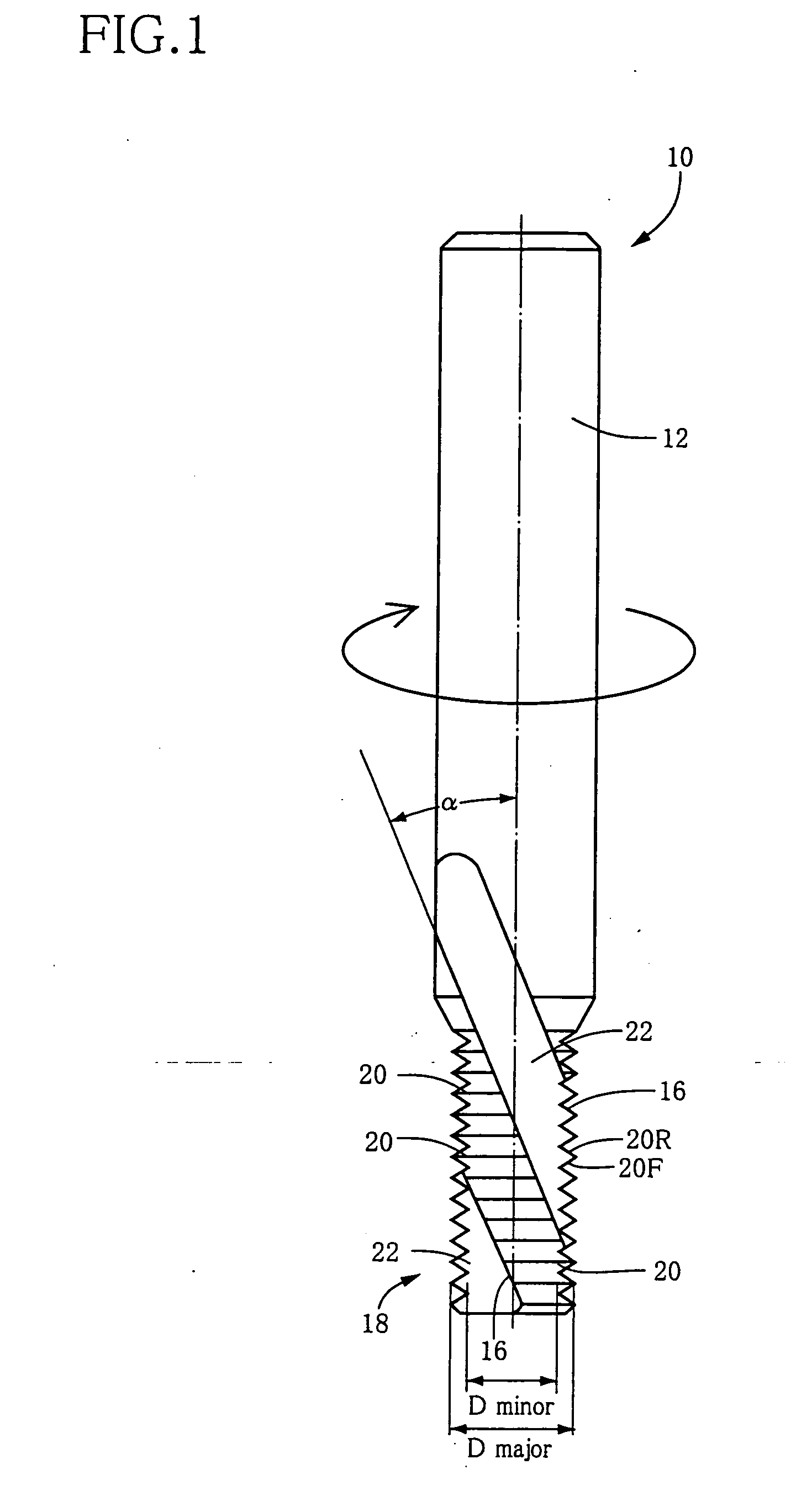Thread mill having flute twisting in direction opposite to rotating direction
- Summary
- Abstract
- Description
- Claims
- Application Information
AI Technical Summary
Benefits of technology
Problems solved by technology
Method used
Image
Examples
Embodiment Construction
[0036] Referring first to FIG. 1, there will be described a thread mill 10 that is constructed according to an embodiment of the invention. The thread mill 10 includes: a cylindrical shank 12 that is to be attached through a suitable holder to a main spindle of a machine tool such as a machining center; and a cylindrical main body in the form of a fluted main body 18 that is coaxial and formed integrally with the shank 12. The fluted main body 18 has a multiplicity of annular protrusions 20 formed on its outer circumferential surface and arranged in axial direction of the main body 18 at a pitch between each adjacent pair of the annular protrusions 20 corresponding to a pitch of an internal thread 30 (see FIG. 2) that is to be machined by the thread mill 10. Each of the annular protrusions 20 has a profile of each ridge of the internal thread 30. Unlike a helical protrusion provided in a tap, each annular protrusion 20 of the thread mill 10 extends in a circumferential direction of ...
PUM
| Property | Measurement | Unit |
|---|---|---|
| Angle | aaaaa | aaaaa |
| Angle | aaaaa | aaaaa |
| Diameter | aaaaa | aaaaa |
Abstract
Description
Claims
Application Information
 Login to View More
Login to View More - R&D
- Intellectual Property
- Life Sciences
- Materials
- Tech Scout
- Unparalleled Data Quality
- Higher Quality Content
- 60% Fewer Hallucinations
Browse by: Latest US Patents, China's latest patents, Technical Efficacy Thesaurus, Application Domain, Technology Topic, Popular Technical Reports.
© 2025 PatSnap. All rights reserved.Legal|Privacy policy|Modern Slavery Act Transparency Statement|Sitemap|About US| Contact US: help@patsnap.com



